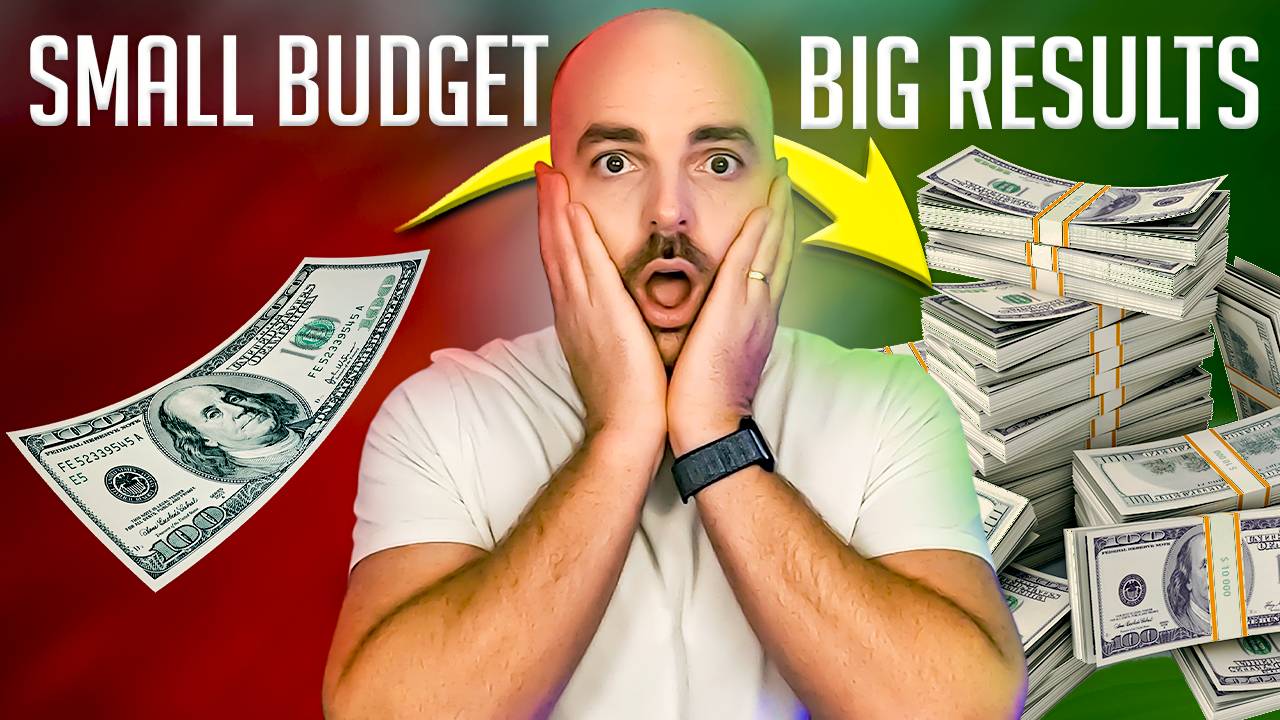
Small Budget Strategies for Google Ads
Mar 30, 2023Google Ads is a game-changer for small businesses, offering an opportunity to compete with larger, well-funded companies. With the right strategies, even businesses with limited marketing budgets can achieve measurable results.
Whether you're running a startup or managing a niche business, Google Ads provides precision targeting, actionable insights, and the ability to scale campaigns as your revenue grows. This guide will focus on actionable strategies tailored to small budgets, ensuring every dollar works hard for your business.

Strategy 1: Focus on Gaining Volume and Data
Achieving sufficient data and volume is the foundation of a successful Google Ads campaign. Without enough clicks and impressions, your campaign remains stuck in Google's "learning phase," preventing it from optimizing effectively. Here's how to break through:
- Set a Baseline for Clicks and Impressions: Aim for at least 10 clicks per day to ensure Google gathers enough data to optimize performance. For search campaigns with a click-through rate (CTR) of 5%, this translates to 300 clicks and 6,000 impressions per month. Performance Max campaigns require even more impressions but yield similar click volumes.
- Calculate the Right Daily Budget: Start with a daily budget that's at least 10 times your average cost-per-click (CPC). For example, if your average CPC is $2, allocate a minimum daily budget of $20.
- Review and Optimize Regularly: Use data insights to refine targeting, adjust bids, and improve ad performance. For help, leverage tools like a Google Ads optimization checklist to streamline your review process.
By focusing on volume, you'll generate the insights needed to make informed decisions and improve campaign outcomes without wasting budget.
Strategy 2: Prioritize a Single Product or Service
When working with a small budget, spreading resources across multiple products or services can dilute your results. Instead, focus your efforts on one high-performing keyword theme, product, or service. Here’s why this strategy works:
- Maximize Your Budget: Concentrating on one offering ensures your limited funds are allocated efficiently, allowing for better performance in a competitive ad space.
- Target Popular or Best-Selling Items: Choose a product or service that's already popular or has the highest profit margins. Success with this focus can generate revenue to reinvest in additional campaigns later.
- Pre-Qualify Leads: Use ad copy to filter for ideal customers. For example, include pricing or product limitations to discourage unqualified clicks. If your offering is niche or premium, this approach ensures only serious buyers engage with your ad.
By narrowing your focus, you create a strong foundation for your campaign, boosting your chances of achieving meaningful results quickly.
Strategy 3: Write Clear, Pre-Qualifying Ad Copy
With Google Ads, every click costs money, so it’s vital to attract the right audience while discouraging irrelevant clicks. Crafting clear, pre-qualifying ad copy ensures your budget is spent on users who are most likely to convert.
- Include Pricing or Specific Details: Mentioning your price upfront can deter bargain hunters if your product or service is premium. Similarly, highlight features or limitations to target the right audience. For instance, "Luxury one-bedroom villas for couples only" filters out families or groups seeking different accommodations.
- Be Direct About Benefits: Use concise language to highlight your product’s unique value proposition. For example, "Free shipping on orders over $50" or "Next-day delivery available."
- Avoid Vague Messaging: Clarity in your ad copy minimizes wasted clicks and boosts the likelihood of reaching your ideal customer.
Effective ad copy not only optimizes your ad spend but also increases the chances of meaningful conversions by ensuring your ads resonate with the right audience.
👉 Ad Copy Essentials: How to Write High-Converting Google Ads
Additional Tips for Maximizing ROI on a Small Budget
To make the most of your Google Ads budget, implementing additional techniques can significantly improve your return on investment (ROI). Here are some essential tips:
Optimize Your Quality Score
Google’s Quality Score influences both your ad rank and cost-per-click (CPC). Focus on improving ad relevance, landing page experience, and expected click-through rate (CTR). A higher Quality Score lowers your CPC and increases ad visibility, stretching your small budget further.
Enhance Your Landing Page
A well-designed landing page improves user experience and boosts conversions. Ensure your landing page aligns with your ad copy, features a clear call-to-action, and loads quickly. A better landing page experience not only improves conversion rates but also contributes to a higher Quality Score.
Target Long-Tail Keywords
Long-tail keywords are less competitive and more specific, often resulting in lower CPCs and higher conversion rates. For example, instead of bidding on “villas in Bali,” target “affordable one-bedroom villas in Seminyak.” These keywords attract users further along the purchasing funnel.
Use Ad Extensions
Ad extensions like sitelinks, callouts, and location details provide additional information and improve ad visibility. They make your ad more appealing, increase CTR, and enhance user engagement without additional costs.
Employ Negative Keywords
Use negative keywords to filter out irrelevant searches. For instance, if you sell luxury items, exclude terms like “cheap” or “free” to avoid wasting budget on users not interested in premium products.
Location Targeting: Maximize Impact Where It Matters
For small budgets, focusing on relevant geographic locations is essential to avoid wasting money on users outside your service area.
Narrow Your Focus
Use Google Ads' location targeting to specify cities, neighborhoods, or even a set radius around your business. For example, a local electrician in Sydney might target ads to specific suburbs with higher demand.
Leverage Demographics by Region
Study the demographics of your target areas to refine messaging and keywords. Certain regions may respond better to different ad styles, pricing, or services.
Exclude Irrelevant Locations
If your business only serves a local audience, exclude regions where your services are unavailable. For example, a florist in Melbourne wouldn’t want ads shown to users in Perth.
By targeting precise locations, you ensure your budget is spent only on potential customers within your reach.
